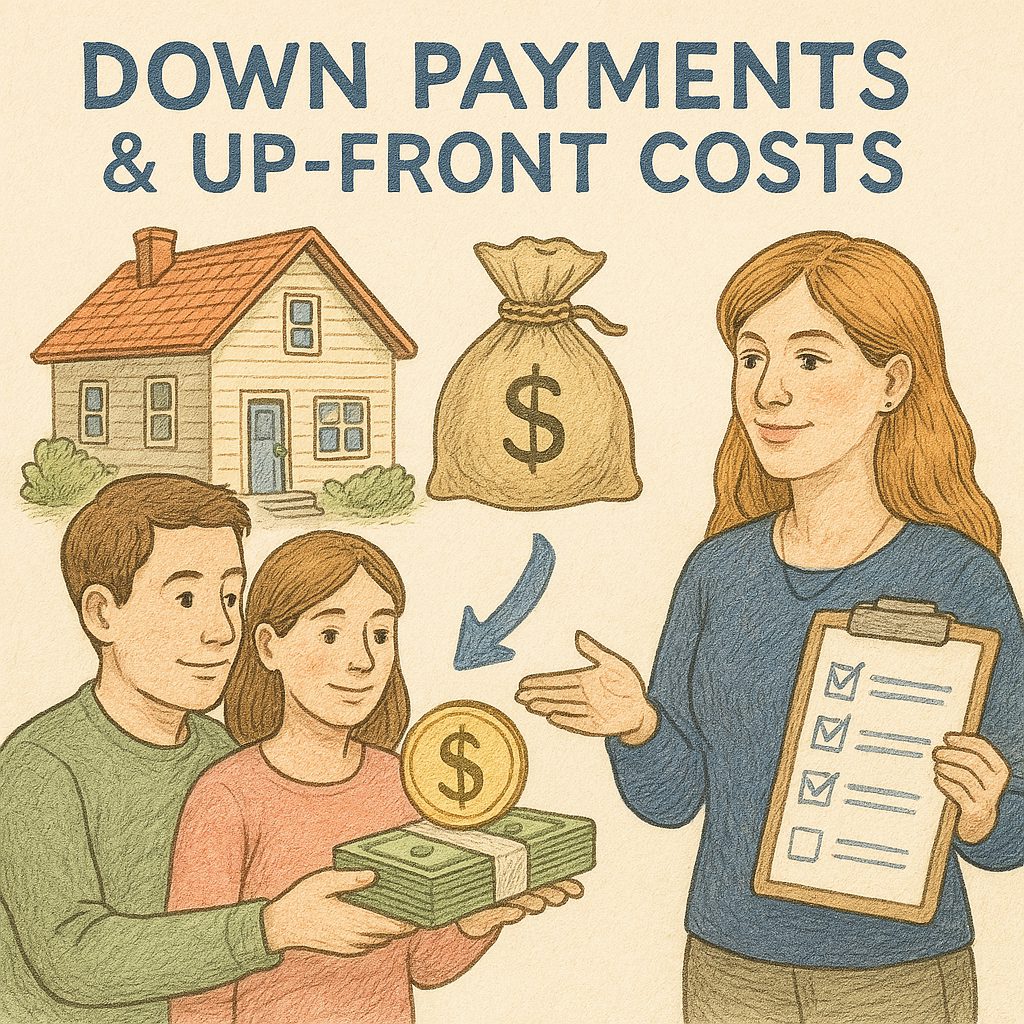HOME BUYING GUIDE: DOWN PAYMENTS AND UP-FRONT COSTS
Buying a home is an exciting journey, but it’s important to be prepared for the various costs involved.
Understanding down payments and upfront costs can help prospective homeowners budget effectively and take advantage of available resources.

Down payments and upfront costs are key financial elements in the journey to homeownership in Sacramento. Homebuyers typically face down payments ranging from 3% to 20% of the home's price, and should also prepare for additional costs like home inspections and closing fees. Assistance programs are available to ease the financial burden, especially for first-time buyers. Understanding these components is crucial for making informed and confident purchasing decisions.
- 💵 Down Payment: In Sacramento, expect to put down 3% to 20% of the home's cost. FHA, VA, and USDA loans offer lower down payment options.
- 🔍 Upfront Costs: Beyond down payments, prepare for 2%-5% in closing costs, inspection fees, and moving expenses.
- 🌟 Assistance Programs: California offers numerous programs and grants to aid first-time buyers, reducing financial barriers.
- 📈 Credit Requirements: Conventional loans typically need a credit score of at least 620, while FHA loans may accept 580.
- 📊 Financial Preparedness: Utilize financial advisors, secure pre-approval, and consider counseling for readiness.
- 🏡 Market Affordability: Compared to other California cities, Sacramento remains a more affordable choice, with potential for community appeal.
- 🔑 Planning & Resources: With the right information and strategies, buying a home in Sacramento becomes an achievable and fulfilling goal.
In Sacramento, homebuyers typically face down payments ranging from 3% to 20% of the home's price. For instance, if you're eyeing a $500,000 home, expect to put down between $15,000 and $100,000. Although daunting, there are options that offer flexibility:
- 1️⃣ FHA Loans: These government-backed loans allow for lower down payments, sometimes as low as 3.5%.
- 2️⃣ VA and USDA Loans: For eligible buyers, these offer the potential for zero down payments.
- 3️⃣ Down Payment Assistance Programs: California offers various programs to help reduce this upfront cost, making homeownership more accessible.
Opting for a smaller down payment can make it easier to purchase your home sooner, but keep in mind, this may result in higher monthly mortgage payments, and you might also need to pay for private mortgage insurance (PMI).
Besides the down payment, homebuyers should prepare for other upfront costs. Closing costs can range from 2% to 5% of the home's purchase price, meaning for a $500,000 home, you could be looking at an additional $10,000 to $25,000. Other costs to consider include:
- 1️⃣ Home Inspection and Appraisal Fees: These help ensure the property's value and condition.
- 2️⃣ Moving Expenses: These average around $1,692, depending on distance and services required.
- 3️⃣ Emergency Funds: Having a reserve to cover 3 to 6 months of living expenses is crucial for unexpected repairs or financial changes.
Understanding these costs is crucial for setting a realistic budget and preventing financial stress post-purchase.
California's numerous assistance programs are designed to ease the financial burden for first-time homebuyers. Programs like the CalHFA First-Time Home Buyer Program and local grants offer low-interest loans and down payment assistance. Recently, more programs have emerged, providing grants from $7,500 to $50,000 without repayment requirements—making homeownership a more achievable goal.
- 1️⃣ Program Variety: California offers diverse programs to cater to different income levels and buyer needs.
- 2️⃣ Eligibility Criteria: Typically, programs require a minimum credit score and income limits, so understanding these is crucial.
These resources can substantially enhance affordability for low- and moderate-income buyers.
Buying a home means being financially ready. Generally, a credit score of 620 is required for conventional loans, while FHA loans may accept scores as low as 580. Here are some steps to prepare:
- 1️⃣ Assess Budget: Utilize mortgage calculators and financial advisors to determine affordability.
- 2️⃣ Secure Pre-Approval: This shows sellers you’re serious and clarifies borrowing potential.
- 3️⃣ Consider Financial Counseling: Professional advice can improve financial literacy and readiness.
Thorough preparation ensures that you're set for the responsibilities of homeownership.
Sacramento is relatively more affordable compared to major California cities, making it a prime spot for first-time buyers. Although the overall California market remains pricey, with a median home price climbing past $800,000, Sacramento offers a blend of affordability and community appeal.
- 1️⃣ Economic Growth: The area's job opportunities and growth contribute to its attractiveness.
- 2️⃣ Future Trends: Analyzing market trends can guide timing for purchases.
It's crucial for potential buyers to understand these dynamics to make informed decisions.